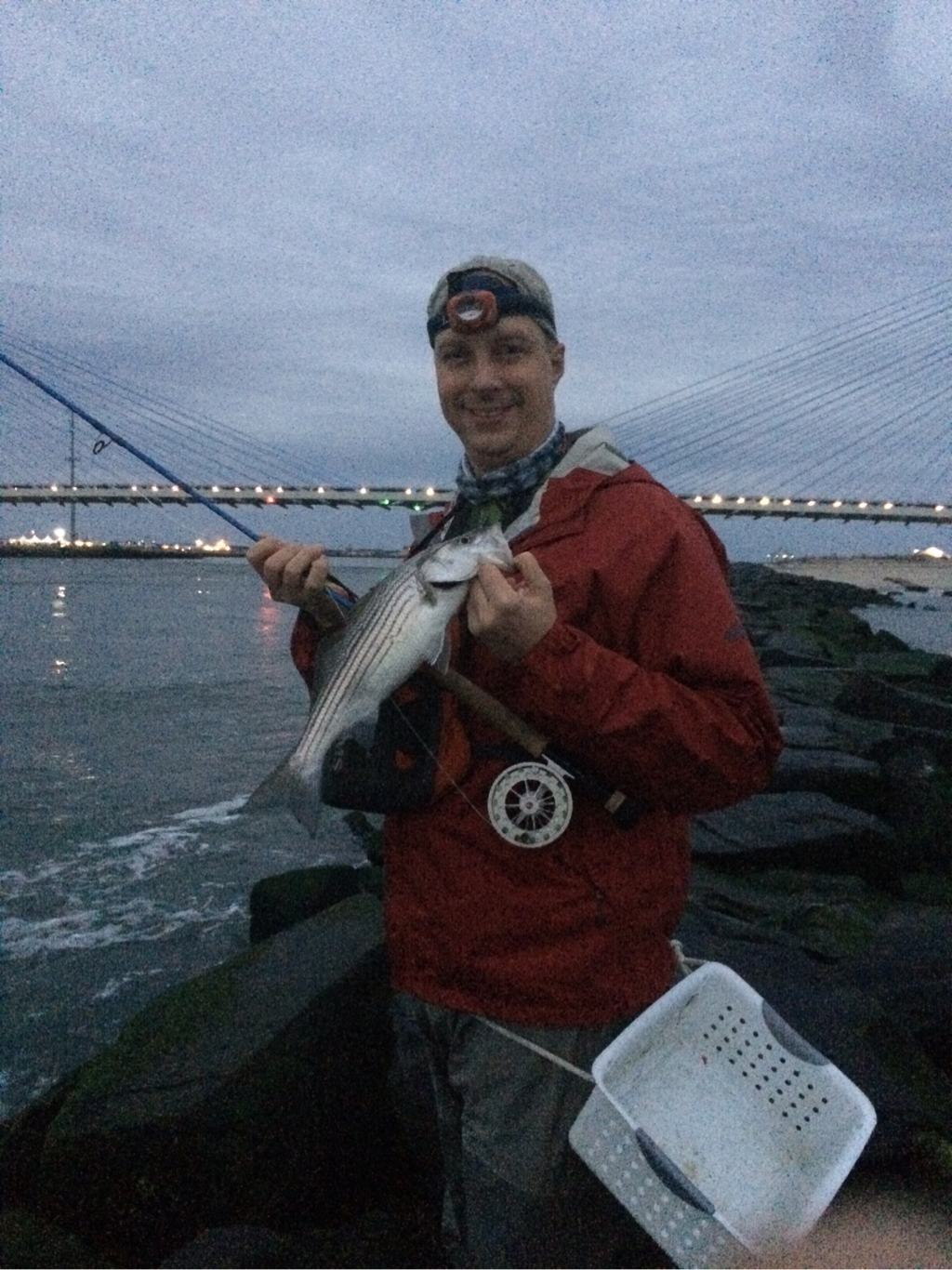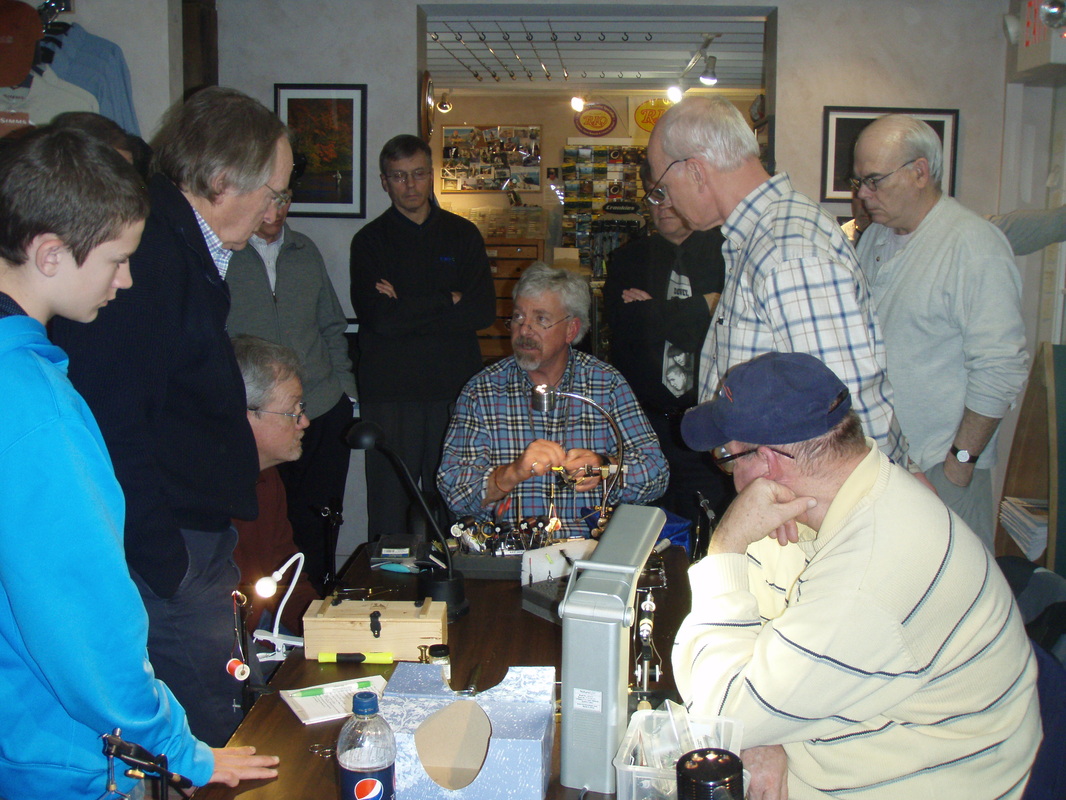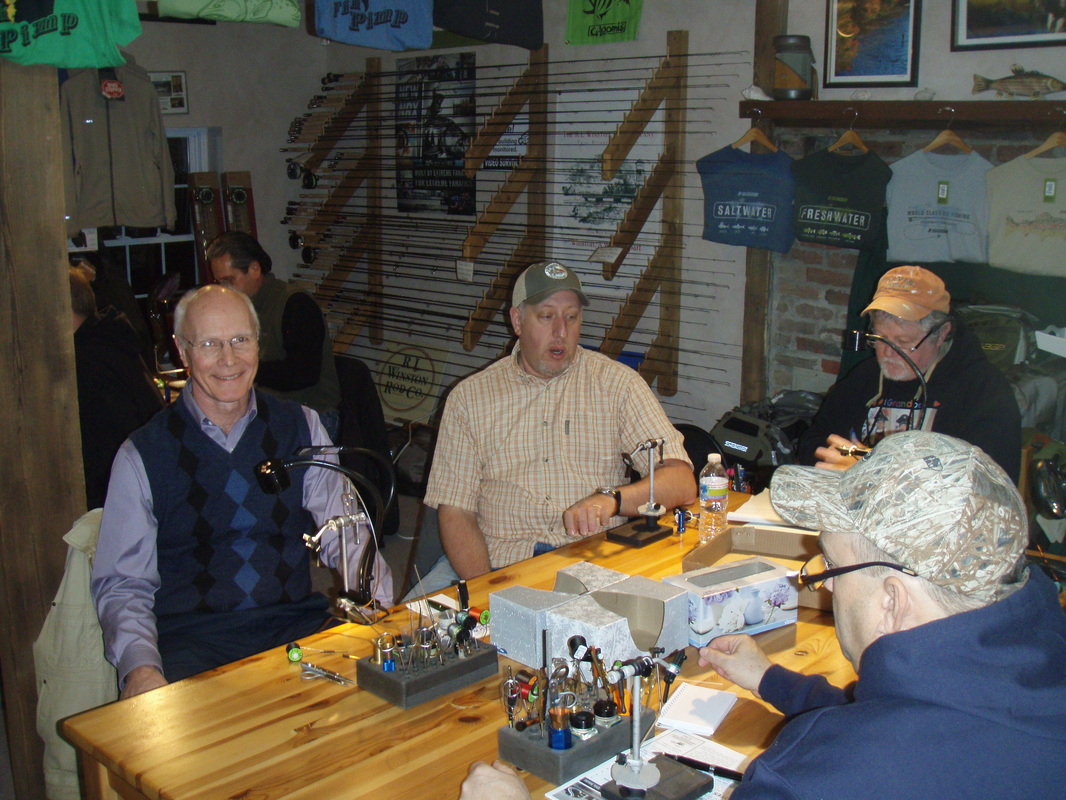|
Ryan caught some short stripers and shad on an early morning incoming tide. The Striper ate a flat wing in dark colors. The shad ate a small white hair wing.
Check out this strong report from Henlopen! Some big blues were caught on the Flats, plus a couple of stripers. The blues were taking deceivers and Clousers in white or pink and white. NEWS FROM THE DELAWARE DEPARTMENT OF NATURAL RESOURCES AND ENVIRONMENTAL CONTROL
Contact: Joanna Wilson, DNREC Public Affairs, 302-739-9902 Division of Fish & Wildlife reminds anglers: Recreational striped bass regulation change to take effect on May 11 DOVER (May 7, 2015) – DNREC’s Division of Fish & Wildlife reminds anglers that the new recreational striped bass regulation will take effect May 11. The revised regulation brings Delaware into compliance with the Atlantic States Marine Fisheries Commission’s Atlantic Striped Bass Fisheries Management Plan, which now requires a 25-percent reduction in both the recreational and commercial striped bass harvests in 2015. The new regulation reduces recreational harvest through changes in size limits, but maintains Delaware’s current seasons and possession limits. “This regulation maximizes opportunities for all of Delaware’s recreational anglers to catch striped bass, the favorite fish for many anglers, while also achieving the mandated reduction in Delaware’s recreational harvest,” said Division of Fish & Wildlife Director David Saveikis. Under the new regulation, a recreational angler is allowed possession of two striped bass per day (in any combination) from 28 to 37 inches or 44 inches or greater, with the season open year-round for all state waters except those covered by the summer slot season or spawning closures. The popular striped bass summer slot season (July 1-Aug. 31 in Delaware Bay, Delaware River and their tidal tributaries) remains in place, but with a reduced slot size of 20 to 25 inches. The summer slot season daily possession limit is two fish. The spawning season closure remains in effect from April 1 through May 31, with no striped bass to be kept from the Nanticoke River or its tributaries, the Delaware River and its tributaries north of and including the south jetty of the C&D Canal, or the C&D Canal and its tributaries. Striped bass caught in these areas during spawning season must be immediately released back into the waters. The commercial striped bass quota for 2015 has automatically been reduced by the required 25 percent in accordance with established regulation procedure. The notice of an expected regulation change was included in the print version of the 2015 Delaware Fishing Guide, but it did not contain the updated information; the online version of the guide will be updated to include the new size limits at 2015 Delaware Fishing Guide. For more information on striped bass regulations, call the Fisheries Section at 302-739-9914 or visitwww.dnrec.delaware.gov/fw/Fisheries. We started the winter fly tying classes last week and they went great! Tuesday night is the beginner class. This class is as full as we have ever seen with a total of 17 people attending. We started class with the venerable Green Weenie. A staple pattern in the White Clay and a perfect pattern to start beginning tiers off with. The second fly of the night was the Wholly Bugger. Terry used the verigated chenille for the sample pattern. It is easier to see the two tone chenille when it is being wrapped around the hook shank, and this is why Terry used it. After seeing the end result I think we may have stumbled onto something. It was great to see all of the guys in class learning new techniques. We are proud to say that every fly that was tied in class is "fishable" and everybody did a great job. I am really excited to see some of the homework next Tuesday night. Here are a few more pictures from the Tuesday night class. Night two, the Wednesday night class, is the advanced fresh water class. This class has a core group of guys that return every year. This is a great thing for the shop, because it forces us to come up with new and innovative patterns to teach in class. We say "teach" some might say "torment" but it is all in the name fun. The best way to strengthen your skill set is to tie flies and patterns you might not normally attempt. We jumped right in with a cased Caddis pattern. Definitely an advanced pattern with a section of the fly tied with a dubbing loop consisting of Pheasant tail fibers. A mess for sure while tying the fly, but if done correctly it looks way cool after it is trimmed to shape. The second fly of the night was a "gimme" compared to the first one, the Teeny Nymph. With only 3 materials including the hook and thread this is a "box filler" as you can crank out a bunch of these in short order. Its ease of tying is only matched by its effectiveness in the water. A great night was had by all and once again the homework results will be interesting to see. I am sure everyone will do a great job. Here are a few pictures from the Wednesday night class. The third night of class is the Thursday night Saltwater class. Staple patterns were the theme of the week with the two flies being the Clouser minnow and the Half and Half variation. Do you think it is a coincidence that we start the saltwater tying class with arguably the most effective pattern ever? This is usually the smallest class, which is a shame because there will be a ton of knowledge gained by the attendees after the 6 weeks. The guys did great. The Stripers and Blues are going to be in real trouble this spring when these patterns hit the water. Here are the pictures from the Thursday night class. The tying classes are a great time for both the teachers and the attendees. If you think you may be interested in taking a class click here for more information. Till next week...
Tight Lines  The Ska-opper is a simple, yet very effective Gurgler type fly. Below I have posted a video that features Scott Howell, the star of Skagit Master 2. In the 10 minute video Scott explains the origin of the fly, how they came up with the name and at the end it shows him putting it to task on the water. Originally developed as a Pac Northwest Steelhead fly. We at the shop have have been using it with great success on Smallmouth this entire summer. Because we are not dealing with the same current flows here in Delaware we have modified the body matl. and changed from spun deer hair to Estaz. This makes the fly much faster to tie and allows for color change of the body. The flies pictured have flash in the tail as well as rubber legs. I believe the rubber legs make a difference, as well as the flash, but this fly can be tied with only 3 materials; Marabou, Estaz, and Foam. Spend a few minutes tying a few of these up and fish them, I will bet after the first strike you will be as addicted to Ska-opper fishing as we are, and yes for those of you wondering I am going to give these flies a shot over some trout as well as Stripers this fall. Hook; TMC 8089, TMC 811S, or Mustad 3366 Tail; Marabou blood quill tied over a few strands of Krystal flash Body; Estaz or Cactus chenille Top; 2mm foam or 1/8" Evazote For Smallmouth I seem to prefer the brown / root beer color combo, but have caught fish on white / pearl, yellow / yellow and black. A size 10 8089 (currently on back order) or a #2 3366 hook fit in well with the Smallmouth, but hook size can be adjusted accordingly. As a added tip try hanging a small Nymph or Crayfish off of the bend of the Ska-opper. The popping will get their attention and when they see the dropper they may be more inclined to bite it. We call this the "Dinner Bell" set up. Enjoy... |
Archives
January 2019
Fishing
Keep up to date on all things flyfishing. Categories
All
|
|




















 RSS Feed
RSS Feed
